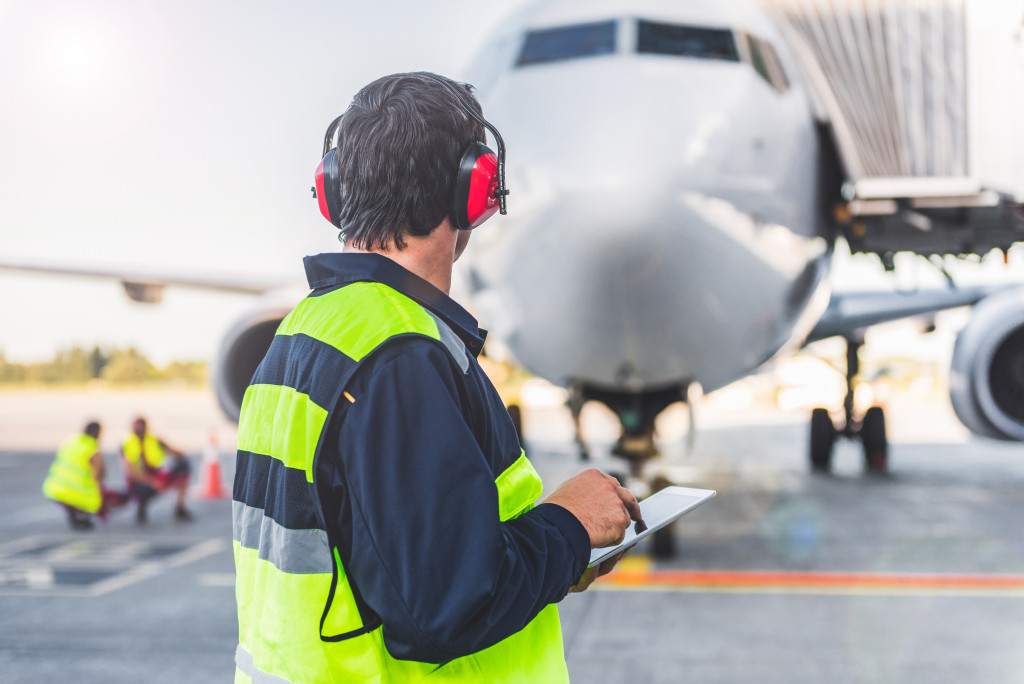Traveling by air is the safest form of transportation. According to the International Air Transport Association, the chance of being involved in a fatal accident on a commercial airline is one in 4.2 million.
While this number is reassuring, it’s only part of the story. The aviation industry is constantly working to make flying even safer. And a big part of that is improving aircraft maintenance. Maintenance crews use various modern technologies to ensure that aircraft are secure and up-to-date. These technologies help make aircraft maintenance efforts more efficient and accurate.
Here are different types of modern practices in aircraft maintenance that you should be aware of.
Predictive Analytics
This type of data analysis uses Machine Learning algorithms to predict future events. This technology is often used in aviation to predict when an aircraft component will need some replacement.
Machines with predictive analytics can detect patterns in data that humans would not be able to see. As a result, they can make more accurate predictions about when an aircraft part will need to be serviced or replaced. This information then gets used to create a maintenance schedule for the aircraft.
By using predictive analytics, airlines can plan and avoid expensive delays caused by last-minute maintenance. Thus, it helps improve airlines’ bottom line and offers passengers a better flying experience.
Thermal Imaging
Aircraft maintenance crews use thermal imaging to find problems with an aircraft’s electrical system. This technology can detect issues that are not visible to the naked eye.
For example, if there is a loose connection in an aircraft’s wiring, it can cause heat to build up. This build-up of heat can get detected with thermal imaging. As a result, maintenance crews can fix the problem before it leads to an accident.
While this technology has been around for some time, it has only recently become commonly used in aircraft maintenance. But its ability to detect hidden problems will surely become even more popular in the future.
Augmented Reality (AR)
AR is a technology that overlays digital information in the real world. In aviation, AR is often helpful for tasks such as wiring diagrams and instructions for assembling components. It allows mechanics to work more efficiently because they don’t have to switch between multiple screens or reference manuals.
AR provides a near-seamless experience that can help reduce human error. It is also a great training tool for new mechanics since they can see what they need to do without asking for help. The use of AR in aircraft maintenance is still in its early stages. But as the technology becomes more refined, it will become more widely used. That’s why it’s essential to be aware of this technology and its potential applications.
Aircraft Ground Power Units
Engineering teams use aircraft ground power units (GPUs) to supply electrical power to an aircraft while it’s on the ground. This technology is necessary for critical tasks, such as starting the engines, running the air conditioning, and powering other onboard systems.
A high-quality aircraft GPU can bring a myriad of benefits. For example, it can help reduce fuel consumption and emissions. Additionally, it can help improve the reliability of an aircraft’s electrical system.
As the aviation industry becomes more environmentally conscious, GPUs will become even more popular. Investing in this technology now will help you stay ahead of the curve and be prepared for the future.
3D Printing
This technology is ideal for creating aircraft parts that would otherwise be difficult or impossible to manufacture using traditional methods. That includes complex parts with hollow cavities or internal channels and parts with unique geometries.
3D printers can create parts quickly and with little waste. This feature is essential for the aviation industry because it can help reduce costs and lead times. Additionally, it can help ensure that spare parts are always available when needed.
Many airlines are already using 3D printing for some of their aircraft parts. And as the technology becomes more refined, it will likely become even more widely used. So, knowing its capabilities and how it can benefit your operation is essential.

Automatic Dependent Surveillance-Broadcast (ADS-B)
ADS-B is a technology that uses satellite signals to determine an aircraft’s position. This information is then broadcast to other aircraft and ground stations.
This technology offers several benefits for both airlines and passengers. For example, it can help reduce congestion and improve safety. Additionally, it can provide real-time information about weather and other conditions.
As the aviation industry sees more reliance on technology, ADS-B will become even more critical. That’s why it’s essential to be familiar with this technology and start planning for its implementation.
The aviation industry is constantly evolving and changing. And that means that aircraft maintenance must also change and adapt. Airlines can improve efficiency, accuracy, and safety by using new technologies. So if you’re a fan of flying, make sure to keep an eye out for these emerging technologies in aircraft maintenance.







